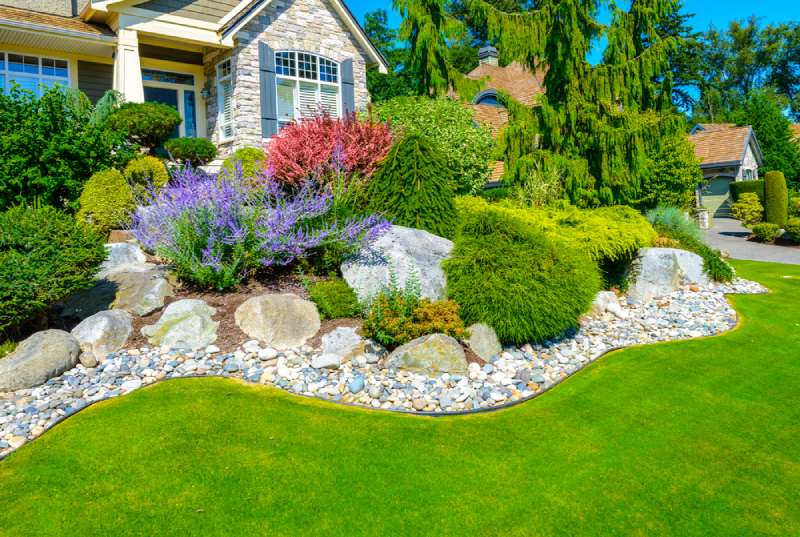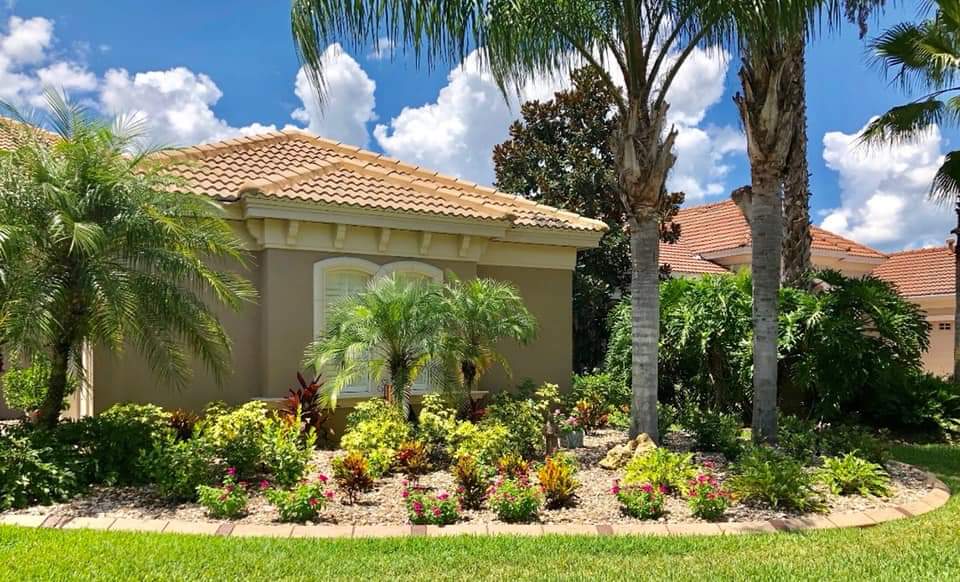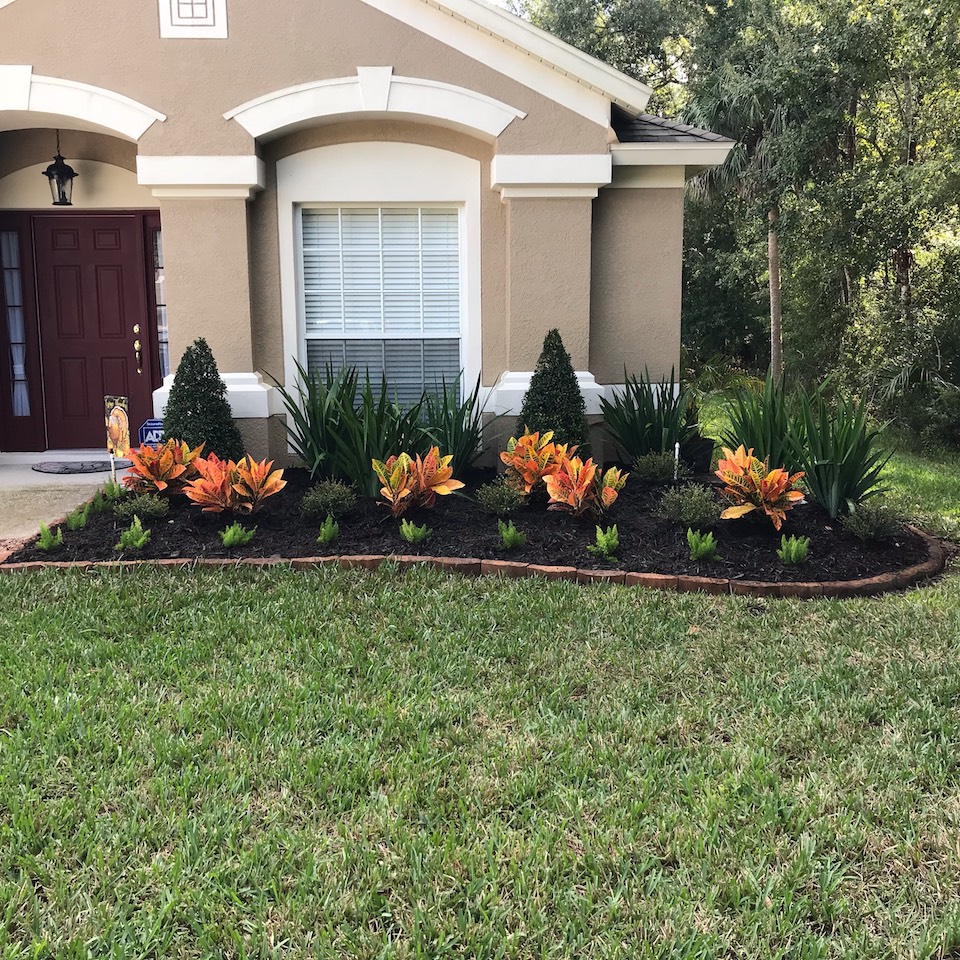Just How Palm Desert Landscaping Can Raise Your Home's Aesthetic Charm
Just How Palm Desert Landscaping Can Raise Your Home's Aesthetic Charm
Blog Article
A Comprehensive Guide to Designing and Implementing Effective Landscape Design Solutions
The art and science of landscape design prolong beyond plain looks; they entail a thoughtful assimilation of style concepts, environmental stewardship, and practical application. What approaches can one utilize to ensure these landscapes not just prosper but also flourish in consistency with their environments?

Understanding Landscape Layout Concepts
One could question what fundamental components contribute to reliable landscape design. At its core, successful landscape layout hinges on several vital principles that direct the arrangement and option of elements within a space. These principles include unity, percentage, balance, and rhythm, each offering to produce a harmonious outside environment.
Unity describes the natural connection amongst different parts, guaranteeing that they interact visually and functionally. Balance can be accomplished with balanced or asymmetrical plans, enabling the landscape to really feel secure and inviting. Percentage involves recognizing the scale of aspects in regard to each other and the surrounding setting, promoting visual harmony and convenience.

Assessing Your Outdoor Area
Prior to carrying out the principles of landscape layout, a detailed evaluation of your outdoor room is vital. This initial evaluation assists specify the extent of your landscaping job and ensures that your layout lines up with the unique features of your residential property. Begin by assessing the measurements of your area, taking accurate measurements to understand the offered area for different components such as outdoor patios, gardens, and pathways.
Next, observe the existing functions of your landscape, consisting of topography, soil quality, and drainage patterns. These elements considerably affect plant choice and placement. In addition, assess the sunlight exposure throughout various areas throughout the day, as this will certainly impact the kinds of plants that prosper in your garden.
Take into consideration the microclimates created by frameworks, trees, and other obstacles, as they can influence temperature and wetness degrees. Last but not least, keep in mind of any type of existing plants or hardscape elements that you wish to keep or remove. This extensive examination lays the foundation for a efficient and educated landscaping service, guaranteeing that your design is not only visually pleasing yet likewise useful and sustainable for many years to find.
Sustainable Landscaping Methods
Incorporating sustainable landscape design methods is crucial for creating an eco responsible outdoor space. These methods not only promote environmental equilibrium but also boost the aesthetic and functional value of a landscape. One foundational technique is the usage of native plants, which need less water and maintenance while sustaining local wild animals. Implementing efficient watering systems, such as drip watering, lessens water waste and makes sure that plants receive ample wetness.

Another you could try these out reliable technique is the strategic positioning of hedges and trees to give natural windbreaks and shade, hence lowering energy expenses (Palm Desert Landscaping). Rainfall Look At This gardens can be incorporated right into the landscape style to handle stormwater runoff efficiently, filtering system contaminants before they go into waterways
Selecting the Right Plant Kingdoms
Picking the right plants for your landscape is essential to attaining both aesthetic charm and environmental consistency. The procedure starts with an understanding of your local environment, soil conditions, and the specific microenvironments within your landscape. Analyzing aspects such as sunlight direct exposure, moisture degrees, and existing plants will certainly help you choose plants that prosper in your one-of-a-kind setting.
Consider incorporating native plants, as they are well-adapted to neighborhood conditions, need less maintenance, and support neighborhood wild animals. Furthermore, choosing a diverse array of varieties can enhance biodiversity while reducing the threat of illness and pest episodes. It is necessary to examine the development routines, blooming durations, and seasonal colors of possible plants to develop a dynamic and cohesive landscape.
Moreover, consider the planned use the space; for instance, if the location will certainly experience high foot website traffic, go with resistant ground covers. By attentively choosing plants that line up with both your environmental demands and visual objectives, you can produce a lasting landscape that not just improves your property but also adds favorably to the surrounding community.

Application and Maintenance Strategies
As soon as the ideal plants have been chosen for your landscape, the emphasis shifts to efficient implementation and ongoing maintenance methods. Effective setup begins with correct site prep work, that includes dirt testing to determine nutrient levels and pH, complied with by amending the soil as required. Very carefully prepare plants according to their growth habits and light requirements, making certain appropriate spacing to promote healthy and balanced development.
Irrigation is a vital aspect of implementation. Develop a watering schedule that considers the certain requirements of each plant types, adjusting for seasonal modifications. Making use of drip irrigation systems can improve water efficiency and minimize drainage.
Maintenance approaches need to be applied to ensure the long life and vitality of your landscape. Normal jobs include weeding, mulching, read here and pruning to regulate growth and stop illness. Fertilizing should be conducted based on dirt tests, supplying the essential nutrients without over-fertilizing.
Monitoring for bugs and conditions is vital; early detection can avoid significant damage. Finally, seasonal changes to maintenance routines, such as winterizing perennials and preparing for spring development, will ensure that your landscape continues to be visually attractive and healthy year-round.
Verdict
Successful application and ongoing upkeep additionally guarantee the longevity and vigor of landscapes. By integrating these elements, landscapes can be changed into beautiful, functional settings that advertise biodiversity and contribute favorably to community well-being.
One might wonder what foundational aspects add to effective landscape design. At its core, effective landscape design pivots on several essential principles that lead the arrangement and option of elements within an area.Picking the right plants for your landscape is important to achieving both aesthetic appeal and eco-friendly consistency. It is vital to examine the development behaviors, blooming periods, and seasonal shades of potential plants to produce a dynamic and natural landscape.
When the appropriate plants have been chosen for your landscape, the emphasis shifts to efficient execution and recurring upkeep approaches.
Report this page